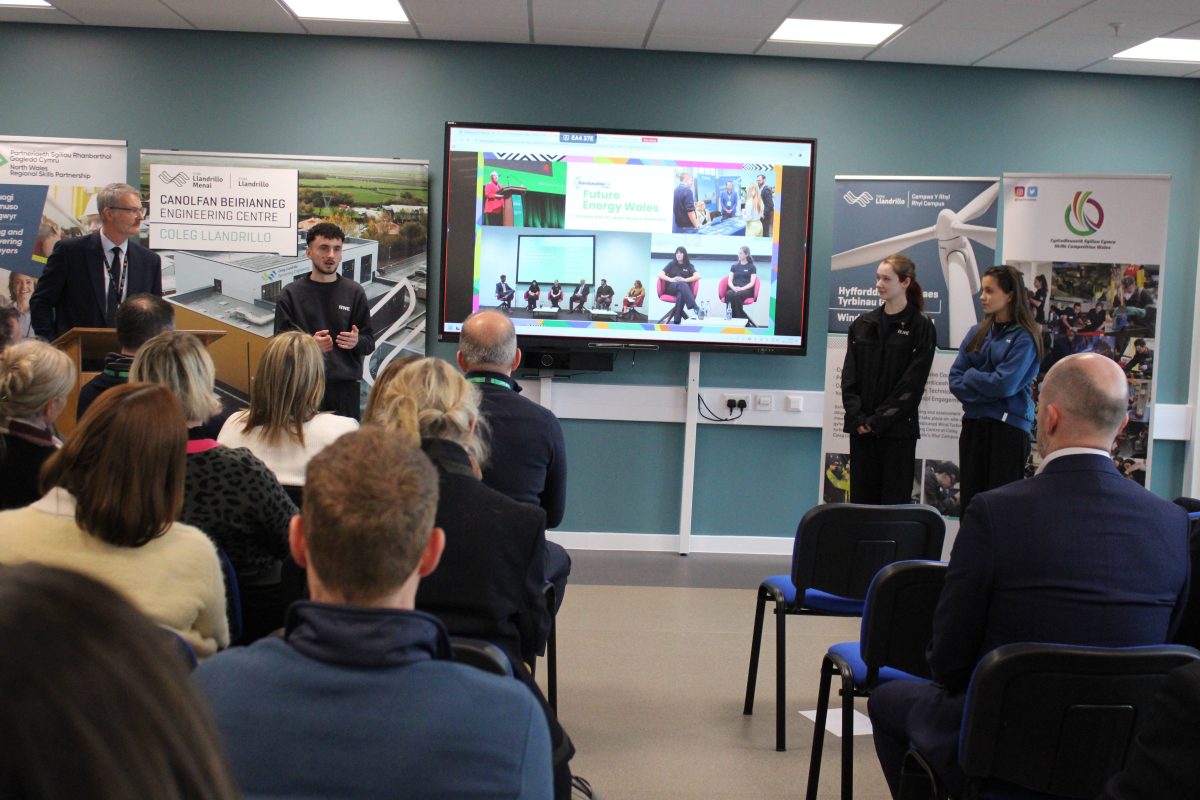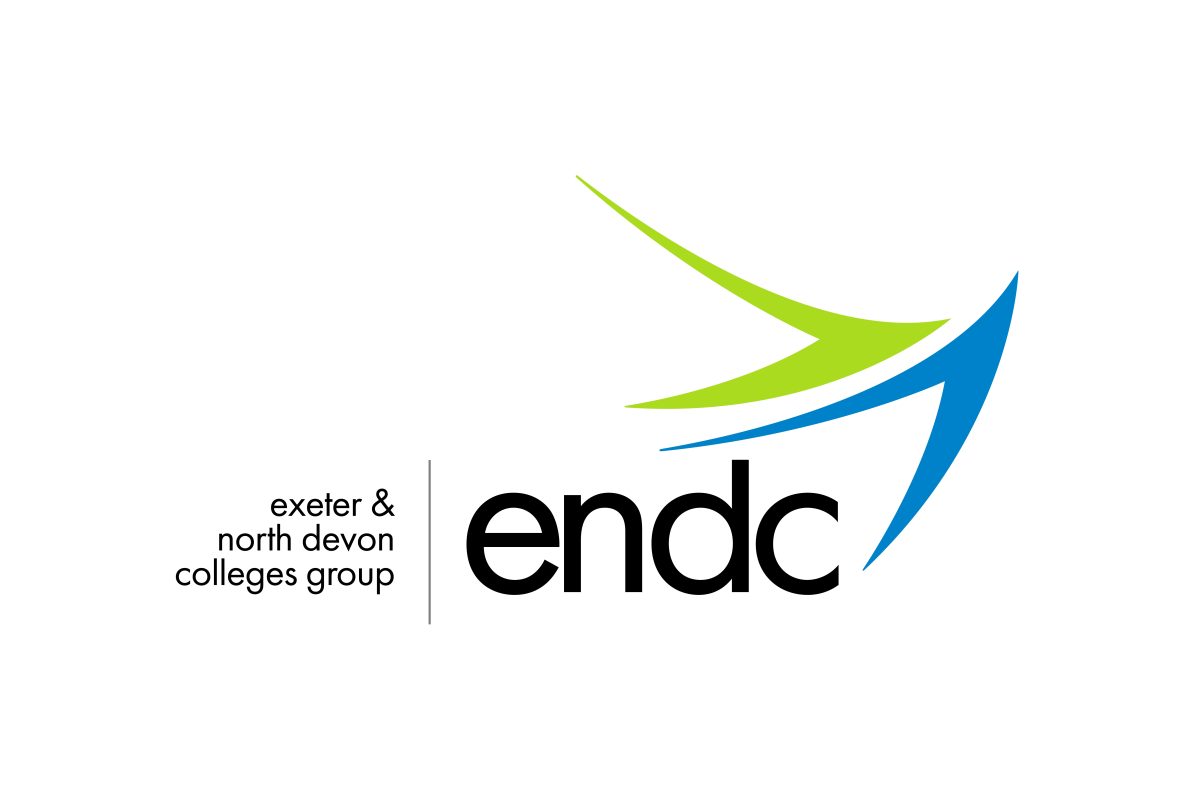Applying for and delivering industry placements

Capacity and Delivery Fund (CDF) for the 2021 to 2022 academic year
A Department for Education spokesperson said:
“Industry placements are at the heart of our pioneering new T Levels, giving young people first-hand experience of the world of work and the opportunity to develop the skills that employers need.
“The Capacity Delivery Fund has successfully funded over 300 providers to work with employers across the country so that students can access high quality placements in the future.
“As T Levels are rolled out over the next three years, funding through the CDF will gradually reduce, meaning that 2022/23 will be the final year of CDF funding for Ofsted ‘good’ & ‘outstanding’ providers, and 2023/24 for all other providers. This is because placements will start to be delivered and funded within T Levels, so that CDF is no longer required. Providers wishing to deliver T Levels in the future may wish to take advantage of this last opportunity to build their capacity, capability and readiness for delivering these vital placements.”
Guidance explaining the arrangements for delivering industry placements through the Capacity and Delivery Fund (CDF) for the 2021 to 2022 academic year:
The purpose of this guidance is to explain the arrangements for delivering industry placements through the Capacity and Delivery Fund (CDF) for the 2021 to 2022 academic year.
Providers with an existing CDF allocation in the 2020 to 2021 academic year and new providers that wish to apply for a CDF allocation in the 2021 to 2022 academic year should read and become familiar with this guidance.
Providers with an existing CDF allocation in the 2020 to 2021 academic year are required to complete monitoring returns and are not required to submit a new funding application. Providers will need to “opt in” via the monitoring returns to be considered for a CDF allocation in the 2021 to 2022 academic year. Further information can be found in the 2021 to 2022 academic year monitoring form requirements section.
Providers who do not have a current CDF allocation who wish to apply for funding in the 2021 to 2022 academic year must submit a funding application by completing an implementation plan by midnight 8 December 2020. Further information can be found in the new funding application round from the 2021 to 2022 academic year section.
This guidance provides an overview of the requirements for applying for funding, recording and delivering industry placements and completing the monitoring form returns. The guidance also outlines details of the policy changes to be implemented for CDF delivery from the 2021 to 2022 academic year.
Providers must comply with this guidance for CDF industry placements delivered in the 2021 to 2022 academic year. Failure to do so may result in the CDF allocation being removed. Additional links to supporting documentation and useful resources that providers may wish to refer to when implementing and evidencing CDF delivery can be found in the background section.
Information contained in this guidance is for both existing providers who currently have a CDF allocation in the 2020 to 2021 academic year and also those that do not have CDF allocations, but wish to apply for funds from the 2021 to 2022 academic year. New applications will, for the first time, be considered from providers with no minimum Ofsted grade threshold.
Providers new to CDF, who wish to undertake T Level delivery in the future should note that this is the final opportunity to submit an application for CDF. We strongly advise that providers wishing to deliver T Levels at any time in the future apply for CDF in this last round. This will enable you to invest in the capacity and capability to deliver industry placements as part of T Levels in future.
Further information on the opportunity for new providers wishing to apply for CDF from the 2021 to 2022 academic year can be found in the new funding application round from the 2021 to 2022 academic year section.
Background
CDF is funding made available to providers delivering vocational and technical classroom-based programmes for students aged 16, 17 or 18 on level 2 and level 3 programmes. The main purpose of this funding is to build provider capacity and capability to deliver high quality substantial industry placements for students undertaking vocational and technical programmes.
The key principle of an industry placement is that it is occupationally specific and focused on developing the practical and technical skills required for the profession or trade the student is studying towards. Building these industry placements requires significant investment of time and resource in building employer links, developing processes and procedures, preparing students for the workplace and delivering and monitoring the industry placement experience.
As industry placements are a core component of T Levels, CDF will support providers to build their capacity to develop and deliver T Level style industry placements ahead of full roll out.
The 2021 to 2022 academic year is the fourth and final year where new providers can apply for CDF. It is additional to the mainstream 16 to 19 funding allocation, which is allocated based on planned hours for qualifications and employability, enrichment and pastoral (EEP) hours. The industry placements funded through CDF must be delivered on top of the usual planned hours for the study programme.
Further details on the core industry placement principles providers of CDF have to follow, industry placement delivery guidance, a student guide and other guidance resources and video and paper-based case studies are available for information purposes.
New policy and funding priorities from the 2021 to 2022 academic year
Policy changes introduced for the delivery of CDF from the 2020 to 2021 academic year and which also apply for the 2021 to 2022 academic year include:
- the ability to deliver CDF industry placements over 2 academic years where a student is on a 2-year qualifying programme
- a revised industry placement minimum delivery target of 25% of total qualifying students
- priority of delivery for level 3 over level 2 industry placements
As T Level delivery is scaled up, we are keen to ensure that T Level industry placements and CDF industry placements are not competing with each other in the engagement of employers for industry placements. In order to support a smooth transition into T Level delivery, further changes will be introduced for CDF from the 2021 to 2022 academic year. This may impact on providers future CDF funding.
- as T Levels are rolled out over the next 3 years, funding through CDF will reduce, with the 2022 to 2023 academic year being the final year of funding for providers rated as ‘outstanding’ or ‘good’ by Ofsted
- CDF will continue to support both level 2 and level 3 industry placements in the short term. For the 2021 to 2022 academic year a funding rate of £210 per qualifying student (reduced from the 2020 to 2021 academic year funding rate of £250 per qualifying student) at both level 2 and level 3 will be applied
- we will require providers to prioritise the development of level 3 industry placements by delivering a larger proportion of level 3 placements than level 2 placements within their overall 25% target. This reflects the fact that T Levels are level 3 programmes requiring industry placements at the appropriate level
- in the 2022 to 2023 academic year, the funding rate will be further reduced to £160 per qualifying student. In the 2023 to 2024 academic year, the rate will remain at £160 per qualifying student. Access to this funding will be limited to those providers with an Ofsted ‘requires improvement’ or ‘inadequate’ grade as they will not be able to deliver the full range of T Levels until the following year. CDF funding will no longer be available after the 2023 to 2024 academic year
We have now launched the final opportunity for those providers who currently do not have access to CDF to apply. See the section new funding application for the 2021 to 2022 academic year. This will support those intending to deliver T Levels to build their capacity, capability and readiness for entering the T Level market. Providers can apply for CDF with no minimum Ofsted grade threshold.
Industry placements need to include genuine and meaningful on-the-job experience where the student is able to experience the full range of realities of working, such as time-keeping, commuting and interacting with colleagues face to face. Industry placements must be undertaken in a physical workplace environment and therefore industry placements are not currently permitted to be delivered remotely or virtually.
The ability to deliver CDF industry placements over 2 academic years and the 25% minimum delivery target of the total qualifying students remains in place for the 2021 to 2022 academic year.
The expectation is that all industry placements should commence in the first year of a student’s study programme where they are on a 2 year programme (and during the CDF funded year), with a minimum of 50% of all of a provider’s industry placements being successfully completed by the end of the first academic year. The remainder of industry placements would need to be successfully completed by the end of the second academic year. Those industry placements that span over 2 academic years can only count towards the minimum delivery target set in the first academic year which is when the industry placement started and was funded.
Details of how funding is calculated and monitored can be found in the funding calculations based on qualifying students section.
New funding application from the 2021 to 2022 academic year
Providers who currently do not have an allocation for CDF delivery and who wish to be considered for a CDF allocation in the 2021 to 2022 academic year must complete and submit a full implementation plan by the deadline of midnight on 8 December 2020.
Implementation plans will fulfil a number of functions. Firstly, they will demonstrate a commitment from a provider to building the capacity and capability within their organisation to deliver high quality, substantial industry placements. Secondly, they will outline how that commitment will be implemented and supply information on how the funding will be spent.
Further information is available on the implementation plan and guidance in the word document below. The implementation plan template that you will need to complete if you wish to apply for the CDF is included within the word document below.
Implementation plan guidance
MS Word Document, 152KB
Delivery of CDF is expected to reduce as more providers start to deliver industry placements as part of a T Level route. The CDF will not be available after the 2023 to 2024 academic year when T Levels will be fully rolled out. This is the final opportunity to submit an application to provide industry placements through the CDF.
Providers who currently deliver CDF and wish to continue into the 2021 to 2022 academic year do not need to submit an application through this funding round. Instead, providers who currently deliver industry placements should outline their decision to ‘opt in’ through the autumn 2020 monitoring return to be eligible to receive funding in the following year. Funding for CDF in the 2021 to 2022 academic year and beyond is subject to overall government funding priorities to be confirmed later in the year. Providers should be clear that access to CDF does not imply future eligibility to deliver or receive funding for the development or delivery of T Levels.
Qualifying providers
Providers funded by ESFA to deliver classroom-based study programmes for 16 to 19 year olds and who have qualifying students at level 2 and level 3 as defined below are eligible for CDF.
Qualifying students
A list of qualification types used to identify qualifying students is set out below. It should be noted that general vocational qualifications are included in calculating eligible student numbers but applied general qualifications (AGQs) are not. However, some AGQs will be regarded as counting towards the minimum delivery target in the 2021 to 2022 academic year.
Further information on qualifications that count towards the 2021 to 2022 academic year target, including the selected AGQs, can be found in the qualifications that count towards the CDF target for the 2020 to 2021 academic year onwards section.
General vocational qualification types at levels 2 and 3 included in identification of qualifying students
The qualification types included in identifying qualifying students are listed below:
- Advanced Diploma
- Associate Diploma
- Award
- Certificate
- Certificate of Competence
- Diploma
- Diploma (14 to 19)
- Edexcel First Diploma (new syllabus)
- Edexcel First Extended Certificate (2012 onwards)
- Edexcel National Award
- Edexcel National Certificate (new syllabus)
- Edexcel National Diploma (new syllabus)
- First Certificate
- Introductory Certificate
- National Certificate
- National Diploma
- National Extended Diploma
- National Vocational Qualifications
- Principal Learning within Diploma (14 to 19)
- Professional Diploma
The above criteria in no way indicates which qualifications might be subject to defunding in the future.
Qualifications that count towards the CDF target for the 2021 to 2022 academic year onwards
From the 2021 to 2022 academic year onwards, we are keen to ensure that CDF facilitates sufficient, but not competing, capacity building for industry placements across relevant programmes as we roll out T Levels. Therefore, providers will be expected to arrange industry placements for students studying relevant qualifications only (see Qualifying students’ section above) to count towards their 25% minimum delivery target.
Sector subject areas for general vocational qualifications
Qualifying students on qualifications that count towards the delivery target from the Sector Subject Areas below will count towards the minimum delivery target:
| 01.1 | Medicine and Dentistry |
| 01.2 | Nursing and subjects and vocations allied to medicine |
| 01.3 | Health and social care |
| 01.5 | Child development and well-being |
| 03.1 | Agriculture |
| 03.2 | Horticulture and forestry |
| 03.3 | Animal care and veterinary science |
| 03.4 | Environmental conservation |
| 04.1 | Engineering |
| 04.2 | Manufacturing technologies |
| 05.2 | Building and construction |
| 06.1 | ICT practitioners |
| 07.3 | Service enterprises |
| 07.4 | Hospitality and catering |
| 09.2 | Crafts, creative arts and design |
| 09.3 | Media and communication |
| 09.4 | Publishing and information services |
| 15.1 | Accounting and finance |
| 15.2 | Administration |
| 15.3 | Business management |
| 15.5 | Law and legal services |
These are the applied general qualifications (AGQs) that fall within the sector subject areas which are excluded for the purposes of identifying qualifying students but can be counted towards the 25% delivery target. These are all at level 3.
Applied general qualifications that fall within the sector subject areas
PDF, 121KB, 2 pages
How to determine if a qualification counts towards the delivery target
In order to determine if a learning aim or qualification undertaken counts towards the 25% delivery target, providers can refer to the Learning Aims Reference Service (LARS). By searching for the learning aim or qualification within LARS a provider will be able to confirm the sector subject area (SSA) the learning aim or qualification is attributed to. A provider can then reference this to the list of SSAs included within the CDF guidance to ensure the learning aim or qualification can be counted towards the CDF target.
The SSAs listed in the guidance include all the general vocational qualifications at both level 2 and level 3 and the AGQs at level 3 that count towards the CDF delivery targets.
Funding calculations based on qualifying students
CDF allocations made for the 2021 to 2022 academic year will be based on the number of qualifying students, as outlined above, enrolled with each provider in the 2019 to 2020 academic year.
Providers should be clear that receiving CDF funding does not imply future eligibility to deliver or receive funding for the development or delivery of T Levels.
To calculate a provider’s minimum delivery target, we will:
- take the number of students enrolled on qualifying programmes in the 2019 to 2020 academic year to give us your total qualifying students at level 2 and level 3
- apply the minimum delivery target of 25% to both the level 2 and level 3 qualifying students to provide a total minimum delivery industry placement target split by level 2 and level 3
- prioritise level 3 industry placements: the ratio of the level 3 against the level 2 minimum delivery target is uplifted by 25% to provide us with a revised split at level 2 and level 3 across the total minimum delivery target of 25% of qualifying students
For example, where a provider has 1,000 qualifying students (number of level 2 students is 600 and the number of level 3 students is 400).
- providers will need to deliver placements to 25% of their qualifying students, so 250 industry placements
- without the 25% uplift the minimum delivery of placements for level 3 students would be 400 x 25% = 100
- the minimum delivery of placements for level 3 students including the 25% uplift for level 3 is 100 x 1.25 = 125
- the overall minimum delivery target remains at 250 therefore the minimum delivery of placements for level 2 students becomes 125
To calculate a providers CDF allocation, we will:
- multiply the funding value of £210 by the total volume of level 2 and level 3 qualifying students to give us an indicative provider allocation
- where a provider delivers CDF and T Levels, a corresponding reduction will be made to the CDF allocation. This is based on a reduction of the CDF qualifying students by the number of planned T Level student starts
Where a provider has only level 2 or level 3 CDF qualifying students, the displacement of the planned T Level student starts will be made against the level 2 or level 3 CDF qualifying students in totality.
Budgets to support CDF industry placement delivery from the 2021 to 2022 academic year are subject to government spending priorities to be confirmed later this autumn. For existing providers of CDF with qualifying students and for those providers who successfully applied for CDF delivery from 2021 to 2022 academic year, your final CDF allocation will be confirmed in March 2021 and be included as part of your overall ESFA 16 to 19 funding allocation.
The ESFA does not apply a minimum allocation for CDF. CDF allocations made for the 2021 to 2022 academic year will be based on the number of qualifying students enrolled with each provider in the 2019 to 2020 academic year.
The CDF is being provided to support the delivery of successful industry placements and is subject to 2 specific required deliverables:
- capacity building to improve the infrastructure to deliver high quality substantial industry placements from 2021 to 2022
- completion of an industry placement for 25% of a provider’s qualifying students at both level 2 and level 3- achievement of the minimum delivery target
We will not be prescriptive on how the funding is used to build capacity, as long as it supports the intention to deliver substantial industry placements within the current and future T Level routes and represents good value for money (for example does not constitute double funding or displacement of other funding).
We will monitor delivery of industry placements in the 2021 to 2022 academic year via the ILR and school census return and may recover funds if one or both of the above required deliverables are not achieved. Therefore, it is imperative that the recording of industry placements is accurate. Further information on how to record industry placements in the ILR and school census can be found under the heading Recording substantial industry placements and how this data will be used.
2021 to 2022 academic year monitoring return requirements
Monitoring returns are mandatory and must be submitted as a condition of receiving a CDF allocation. Monitoring returns provide us with information on the progress being made in building capacity and capability to deliver high quality, substantial industry placements as we scale up the delivery of T Levels. They also provide assurance that the funding is being used for the purpose intended and is supporting the planning of future CDF funding allocations.
Monitoring returns for the 2021 to 2022 academic year are required twice a year by the following dates:
- on 1 December 2021 we will ask for evidence of capacity building throughout the previous academic year
- on 10 June 2022 we will ask for a year-end report
Where information provided in the December 2021 return is insufficient, providers may need to submit a further financial return by 1 March 2022.
The financial return will ask for information about how CDF funding has been utilised. We will use information from your December 2021 monitoring return as well as ILR/census data to determine the need for providers to complete a financial monitoring return by 1 March 2022.
Your CDF allocation may be at risk should you fail to demonstrate that you have continued to support the development of industry placements and used CDF for the purpose intended. Failure to submit monitoring returns and, where required, an additional financial return may result in a breach of the funding agreement and your CDF allocation may be at risk.
All providers will receive information in advance of each monitoring return deadline on the required information and guidance on completing the monitoring form.
To access the monitoring forms, you must sign into your DfE Sign-in account. We strongly advise you to check that your DfE Sign-in details are valid and that you have the appropriate permissions to access DfE Sign-in in advance of the deadline for the first monitoring return due by 1 December 2021.
We expect that providers in receipt of a CDF allocation in the 2020 to 2021 academic year will also wish to take advantage of CDF funding for the 2021 to 2022 academic year (subject to funding being confirmed this autumn). Monitoring returns will provide the opportunity to opt in or out of CDF delivery for the following year.
By “opting out” through the monitoring return, you will be indicating that you do not wish to receive an allocation for CDF delivery in future years.
Recording substantial industry placements and how this data will be used
A requirement for receiving a CDF allocation is that you record all industry placements fully in the individualised learner record (ILR) or school census at each data return point. Providers will be notified of the minimum number of industry placements they must deliver for students on either a level 2 or a level 3 programme in the 2021 to 2022 academic year. Only qualifications in the relevant SSAs or from the eligible AGQ list will count towards the target. We will be reviewing the data to cross refer the number of placements providers have recorded in the ILR or school census against the data provided in monitoring forms. Providers must ensure that each industry placement is recorded correctly, showing the start and end date and the number of planned hours.
The learning aim reference number for recording CDF industry placements on the ILR and the school census is ZWRKX002.
CDF industry placements must take place on top of the existing study programme hours and CDF funding is allocated in addition to mainstream funding for qualifying students. Therefore, industry placement hours must not be included in the planned hours recorded for the study programme.
It is also important to note that, where hours are currently spent on work experience that is an existing and compulsory part of the qualification hours in a study programme, these work experience hours cannot be counted towards the industry placement hours delivered through CDF because providers are already being funded for these through mainstream study programmes funding. For the placement to be counted, students would need to do the required industry placement hours (minimum of 315) on top of any hours for the existing work experience that are recorded as planned ‘qualification hours’ on the ILR and school census.
Providers that have been selected to deliver T Levels from the 2021 to 2022 academic year must deliver a substantial industry placement for each student, but these cannot be counted as part of the CDF target as they are funded through the T Level funding.
T Level industry placements must be recorded using the learning aim reference number ZWRKX003.This learning aim reference is specifically for T Level industry placement activity and that code must not be used for CDF industry placements. The guidance for how T Levels will be funded can be found on GOV.UK.
Supporting students financially
Information relating to supporting students financially can be found on GOV.UK.
Annual funding agreements/contracts for services with providers
Clauses in our annual funding agreements/contracts for services with providers, include conditions relating to CDF funding:
- where a provider does not meet the minimum number of industry placements, the ESFA may seek to recover funds, and/or may take this into consideration when considering future CDF allocations
- where a provider is assessed to be financial health inadequate, or there are significant quality of delivery concerns, the ESFA may withhold any remaining profiled allocations, and may take such assessments into consideration when considering future CDF allocations
- where the provider does not submit the monitoring returns by the dates published, the ESFA may withdraw the 2021 to 2022 academic year CDF allocation and recover funding paid
These clauses may vary by provider type; therefore, it is advisable that providers become familiar with these new clauses in their Funding Agreements.











Responses